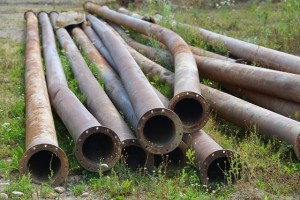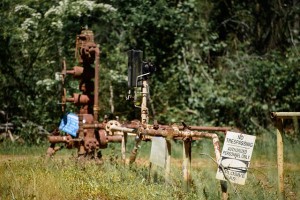Hydrovacing made its first appearance in 1960. Since then, it has been used for a variety of applications. While in its infancy, the technology was rather crude. Over time, the process of hydrovacing has improved significantly. Some of the most significant advancements in the technology came from the industrial gas and oil sectors.
Finding Hidden Utility Lines
 One of the biggest problems faced by these industries was the discovery of buried utility lines. The difficult working conditions and cold climate associated with these industries made it very difficult to find buried lines. Excavating without discovering high pressure water lines was a disaster waiting to happen. As early as the 90s, many sewer and vacuum trucks were equipped with suction devices, converting them into suction excavators. The 90s was a time when the demand for hydrovac trucks started to increase rapidly. These machines were needed for commercial, municipal and industrial applications. However, it took some time before hydrovac trucks would be widely popular across the United States and Canada. The rapid growth of the vacuum excavation sector is the result of the need to increase worker safety while encouraging non-destructive digging techniques.
One of the biggest problems faced by these industries was the discovery of buried utility lines. The difficult working conditions and cold climate associated with these industries made it very difficult to find buried lines. Excavating without discovering high pressure water lines was a disaster waiting to happen. As early as the 90s, many sewer and vacuum trucks were equipped with suction devices, converting them into suction excavators. The 90s was a time when the demand for hydrovac trucks started to increase rapidly. These machines were needed for commercial, municipal and industrial applications. However, it took some time before hydrovac trucks would be widely popular across the United States and Canada. The rapid growth of the vacuum excavation sector is the result of the need to increase worker safety while encouraging non-destructive digging techniques.
How Hydrovac Line Locating Works
Before you choose our service, you should understand exactly how it works. The process involves a standalone vacuum truck, which is suited with a debris tank and reservoir. Through the suction provided by the powerful vacuum, the truck actually sucks the rock, gravel, stone and clay from the Earth, which reveals everything beneath it. One of the reasons why hydro-excavation is an excellent choice for line locating is because it’s minimally invasive and non-destructive. It’s very safe and can be used for backfill restoration, slot trenching, pot holing, coring, daylighting and utility locates. As you might’ve guessed by the name, hydro-excavation uses high pressure water to loosen gravel, rocks and soil. A powerful vacuum sucks up all of the debris from the ground and deposits them into a large tank, which makes it possible to dispose of the materials. A long list of advancements have been made in hydro-excavation technology, so now, it’s one of the most favorable methods used to locate utility lines. It’s capable of precisely excavating an area. Most experts regard the technique as high quality because it has a proven track record for being effective and safe.Line Locating Service
 If you need to locate fiber optics, electric cables, pipes or other utilities, you need hydrovac line locating services. It’s important to understand that these utilities can be damaged easily if traditional excavation is used. When hydrovac line locating is used, it serves as a non-destructive way to find important utility lines, and it doesn’t damage them in the excavation process. The line locating services that we offer are affordable, versatile and accurate. The service is great for a number of applications.
If you need to locate fiber optics, electric cables, pipes or other utilities, you need hydrovac line locating services. It’s important to understand that these utilities can be damaged easily if traditional excavation is used. When hydrovac line locating is used, it serves as a non-destructive way to find important utility lines, and it doesn’t damage them in the excavation process. The line locating services that we offer are affordable, versatile and accurate. The service is great for a number of applications.
Hydrovac Line Locating Is Commonly Used For:
- Mapping
- Plant-site repairs and upgrades
- Mapping
- Locating Buried Utilities
- Locating Corner pins
- Identifying line or pipeline crossing
The above post The Advantages of Hydrovac Line Locating is courtesy of Hydrovac Edmonton Blog
No comments:
Post a Comment